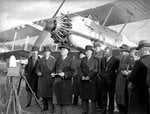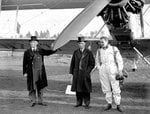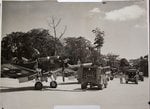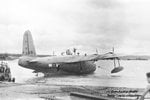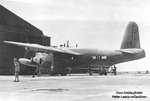- Thread starter
- #61
The Airspeed A.S.10 Oxford was a multi-engine three-seat advanced trainer monoplane used as a military trainer by the RAF in the 1930's. The Oxford was developed to fit specifications T.23/26 for a trainer aircraft, and the prototype Oxford which first flew in 1937, was the military version of the Airspeed Envoy. The aircraft was of the cantilever low-wing monoplane type, powered by two Armstrong Siddeley Cheetah air-cooled radial engines of 375 hp, giving a speed of 190 mph at 10,000 feet. It entered service with the RAF in 1938 and the Royal Navy in 1939/1940 and served until 1945/46. These aircraft included the Mk I with an Armstrong Whitworth dorsal turret, and the Mk II which had the turret removed and was employed mainly for pilot and navigation training.
On the outbreak of World War II, Oxfords were selected as one of the favoured trainer aircraft in Canada, Australia and New Zealand as part of the Empire Air Training Scheme (EATS) or British Commonwealth Air Training Plan (BCATP), and trained many Fleet Air Arm personnel. The BCATP evolved following a meeting of Government representatives from United Kingdom, Australia, New Zealand and Canada in Ottawa, and signed an agreement to set up the Plan in December 1939, converting Canada into what President Roosevelt later termed "the aerodrome of democracy." The first schools opened in Canada in April 1940, and by 24 November 1940 the first trainees from the Scheme arrived in the UK. A total of 8,751Oxfords served in Britain, Australia, Canada, New Zealand, Rhodesia, and the Middle East. In total 137,000 aircrew came to Canada from all corners of the globe to earn their wings in the British Commonwealth Air Training Plan. One of the main training schools was at the RCAF Station, Yarmouth, Nova Scotia, Canada, where the Royal Navy had the eastern side of the airfield whilst the RCAF flew anti-submarine patrols in Cansos from the other side of the field.
Known to trainees as the "Ox Box" the Oxfords were used at the BCATP schools in Canada and EATS Australian schools for instruction in flying, navigation, gunnery, radio and bombing. Designed for all aspects of aircrew training, It enabled training to be given in navigation and direction finding, high-altitude bombing, air gunnery, aerial photography, night-flying and twin-engine flying. In Australia, the prefix A25 was allocated for RAAF use but the imported Oxfords retained their RAF serials. Altogether 391 Oxfords were shipped to Australia and the first aircraft, P6878, was received on 28 October 1940 and the last, LW999 in March, 1944. By the end of production over 8,000 were built.
On the outbreak of World War II, Oxfords were selected as one of the favoured trainer aircraft in Canada, Australia and New Zealand as part of the Empire Air Training Scheme (EATS) or British Commonwealth Air Training Plan (BCATP), and trained many Fleet Air Arm personnel. The BCATP evolved following a meeting of Government representatives from United Kingdom, Australia, New Zealand and Canada in Ottawa, and signed an agreement to set up the Plan in December 1939, converting Canada into what President Roosevelt later termed "the aerodrome of democracy." The first schools opened in Canada in April 1940, and by 24 November 1940 the first trainees from the Scheme arrived in the UK. A total of 8,751Oxfords served in Britain, Australia, Canada, New Zealand, Rhodesia, and the Middle East. In total 137,000 aircrew came to Canada from all corners of the globe to earn their wings in the British Commonwealth Air Training Plan. One of the main training schools was at the RCAF Station, Yarmouth, Nova Scotia, Canada, where the Royal Navy had the eastern side of the airfield whilst the RCAF flew anti-submarine patrols in Cansos from the other side of the field.
Known to trainees as the "Ox Box" the Oxfords were used at the BCATP schools in Canada and EATS Australian schools for instruction in flying, navigation, gunnery, radio and bombing. Designed for all aspects of aircrew training, It enabled training to be given in navigation and direction finding, high-altitude bombing, air gunnery, aerial photography, night-flying and twin-engine flying. In Australia, the prefix A25 was allocated for RAAF use but the imported Oxfords retained their RAF serials. Altogether 391 Oxfords were shipped to Australia and the first aircraft, P6878, was received on 28 October 1940 and the last, LW999 in March, 1944. By the end of production over 8,000 were built.


















